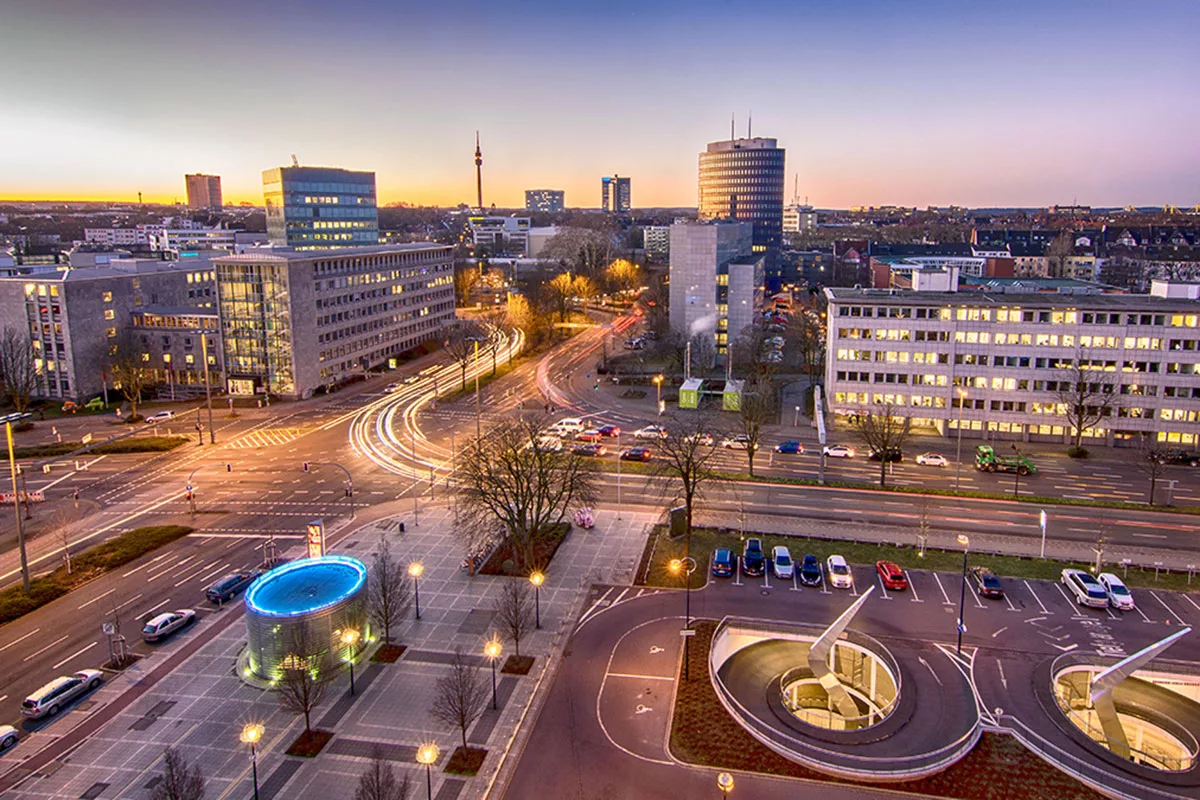Sustainable Urban Ecosystem In Smart Cities
It is the goal of a smart city's innovation to make urban living sustainable by establishing digital innovation that improves the lives of citizens.

Sustainable Urban Ecosystem In Smart Cities
People’s services, such as healthcare, education, housing & living, and economy, can be provided through excellence in governance, economy, transportation, environment, resources, and human resources.
Consequently, smart cities portray an ecosystem where every subsystem is interconnected to create a cohesive sum to make them attractive. The advent of smart cities introduces various new practices and services that impact policies and planning for cities as they coexist with urban infrastructure.
City planners can use a smart city framework in multiple ways to help them meet the standards mentioned above and make their cities more livable. With the most completed projects out of 100 cities, seven have risen to the top.

As part of the 75th anniversary of Indian independence, the Ministry of Housing and Urban Affairs (MoHUA) organized an event and conference titled ‘Smart Cities, Smart Urbanization’ from April 18-20, 2022, in Surat to explore innovative ideas, partnerships, and plans for smart urban development in India.
Five sub-themes were discussed during the conference, including reimagining public spaces, digital governance, climate-smart cities, and innovation. United has developed several key performance indicators (KPIs) for Smart Sustainable Cities (U4SSC).
Using the classification of smart cities published by Vienna University of Technology’s Centre of Regional Science, a dimensioning of smart cities is divided into six categories: smart economy, smart mobility, smart environment, smart people, smart living, and smart governance.
It is now up to India to decide whether these machetes of smartness are worth the effort of building smart, sustainable cities or if it is even possible, with the Indian scenario being so diverse and complex.

From the broader perspective, a smart city is built on four main pillars: social infrastructure, physical infrastructure, institutional infrastructure (including governance) and economic infrastructure focused on citizens.
Do We Need Smart Cities?
Urbanization is an ongoing phenomenon, with 54 per cent of the world’s population living in urban areas. That number is expected to increase to 66 per cent by 2050, which means over the next three decades, urbanization will add 2.5 billion people to cities due to population growth.
As our cities rapidly expand, sustainability is essential to maintain our cities’ sustainability. Undoubtedly, 193 countries agreed on the Sustainable Development Goals agenda at the United Nations, but centralized decisions and actions can be slow.
With connected cameras, brainy traffic systems, and public safety monitoring systems in digital cities, citizens can gain increased protection and emergency support when needed. Furthermore, how can smart cities be protected from attacks?
Are there any ways to prevent hacking, cyber-attacks, data theft, online fraud, banking fraud, and so forth? When multiple city participants share information, how do we protect it ethically and logically? Are the data they report true and accurate? The answers are strong authentication, physical data vaults, and ID management solutions.
It is only when we trust our smart cities that they will work. By combining formal and informal sectors, connecting urban cores with peripherals, providing both rich and poor with services, and integrating migrants and the poor into the city, smart cities make urbanization more inclusive. Smart cities promote inclusive, livable, integrated cities (World Bank).

Even though smart cities can offer a multitude of advantages, including improved infrastructure, attractive job opportunities, and enhanced communication, we cannot ignore the numerous disadvantages and hindrances that exist, such as excess trust in the networks, a lack of privacy and social control, the rapid migration of rural people and the growth of slums, and the destruction of biodiversity and ecosystems.
In other words, it is imperative to make smart cities sustainable in all forms because a smart, sustainable city will be able to create an innovative city that improves the quality of life, efficiency in urban operations and services, and competitiveness using ICTs and other means.
The city must also meet current and future generations economic, social, political, environmental, cultural and environmental needs. Its main challenge will be reducing and controlling its carbon footprint, which could be vital in developing smart and sustainable cities and grids.
Smart cities have to focus on smart water management periodically. Furthermore, to achieve a sustainable, thriving and inclusive future for its citizens, it will be necessary to integrate physical, digital (ICT) and human systems effectively.
Auxiliary Problems
Moving safely and making life easier for city dwellers is still a very distant dream for them. Whenever dissatisfied, people blame the authorities and policymakers alike for not having an interconnected city governance ecosystem. However, authorities condemn people for not conforming to the proper behaviour.
While there will be debates, city planners need to consider this. The infrastructure quality of the cities in the country, even Delhi though it is the capital, could be more consistent with the aspirations of people in general and youth in particular.
Technology has also driven a desire for better, safer, and livable environments in cities, which still need to be improved due to a lack of systemic integration due to the emergence of new technologies.
In September 2016, the Union Ministry of Urban Development announced the formation of a City-Level Advisory Forum (CLAF) as part of its smart cities initiatives guidelines. The city’s elected representatives, local youth, technical experts, associations of taxpayers, welfare associations, trade associations, and others are among the major stakeholders.
It took until recently for this forum to become exponentially functional. The city’s residents have long demanded a cleaner environment with high-quality sanitation and hygiene.
Many people voted for leaders, believing they would improve drainage systems, solid waste, and sewage management to prevent diseases from spreading and waterlogging during rainy seasons, such as in Delhi, Mumbai, Bangalore, etc.
The cold war between public transport and private vehicles underpins the most underpinning challenges to the urban ecosystem. Across all parts of India, there is heavy traffic, road junctions without proper pavements, sidewalks, demarcating streets for walking, bicycles, two-wheelers, four-wheelers and heavy vehicles, and there are endless road accidents with massive deaths continuously.

Streetlights will become next-generation intelligent lighting platforms with long-term capabilities due to secure wireless connectivity and IoT (Internet of Things). The project will integrate solar power into the ecosystem and connect to a cloud-based central control system. People, housing, commerce, and traditional urban infrastructure are not the only elements needed to make smart and sustainable cities.
The other four essential elements for flourishing cities are achieving pervasive wireless connectivity, open data, trustable security, and flexible monetization schemes for all city dwellers. Governments, enterprises, software providers, device manufacturers, energy providers, network service providers and city dwellers must align and work together towards core security objectives.
Access to reliable and accurate data and measurements is a core objective. Data confidentiality and accountability are other core objectives. A smart city program managed by an internal cross-functional ‘transformation’ or ‘innovation’ organization is more closely associated with more experienced smart cities. Its projects often ignore the ecosystem framework.
It is vital to prioritize and develop competencies across various ecosystem layers, including value layers, innovative layers, governance layers, management layers, operations layers, information and data layers, connectivity layers, accessibility layers, technology infrastructure layers, and so on.
It is crucial to create a smart city that has environmental, social, economic, and cultural dimensions in a holistic manner, which promotes innovative socio-technical, socio-economic, and socio-cultural growth.
Is it easier to make cities smart & sustainable if the government focuses on a ‘Smart Village’, providing good amounts of modern facilities & resources? The possibilities are endless.
Edited By, Naveenika Chauhan




